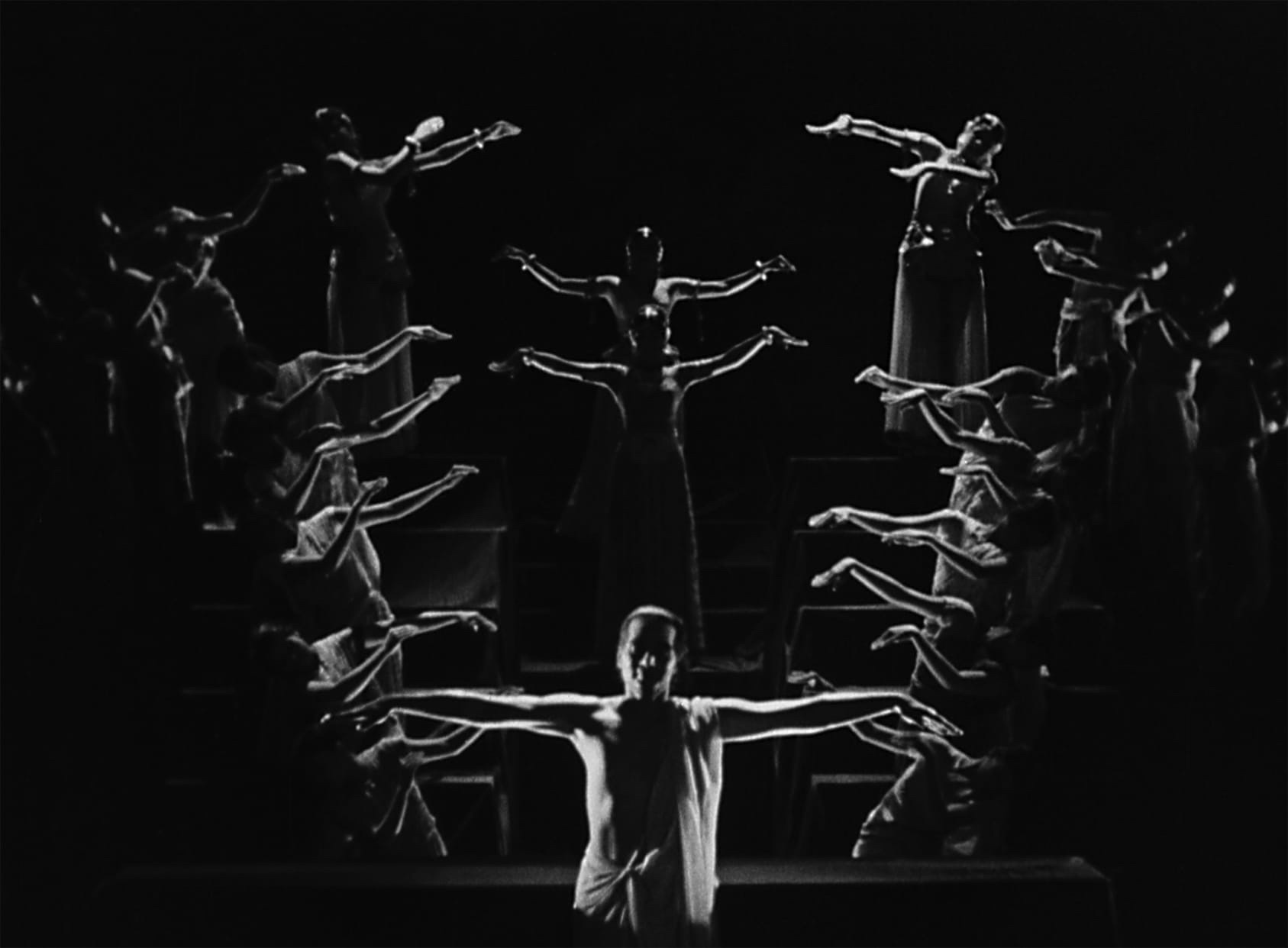For decades, modern-dance pioneer Uday Shankar’s one and only film, the radical Kalpana, was locked away in the National Film Archive of India because of a copyright dispute. “A dance fantasy in celluloid,” as the posters for the film on its 1948 release boldly stated, it features hyperstylized cinematography, spectacular dance sequences, and a layered, melodramatic narrative that warns the Indian film industry and the newly independent nation itself of the perils of pursuing commerce over culture. Kalpana should have been an inspirational classic of postcolonial Indian cinema for generations of artists, academics, filmmakers, dancers, and cinephiles. But this was not to be. Needless to say, such erasures forever alter history, and it is only over seventy years later that we can discover in Kalpana a truly modern cinematic form, created by an artist who was well ahead of his time, and a manifesto for a secular, democratic-socialist India that could have been.
Kalpana, a Sanskrit word, has multiple meanings in English. “Imagination,” “fantasy,” “desire,” “idea,” “decree,” “myth,” and “dream” are some of its translations, and all of those concepts are fully embodied in Shankar’s cinematic landscape. Constructed as a film within a film, a dream within a dream,
Kalpana is framed by a story about a desperate director, played by Shankar himself, who attempts to convince a greedy, box-office-obsessed producer to finance his film. As he begins to narrate his script, a cloud of smoke takes us into Shankar’s semi-autobiographical tale.
The first scenes are of a playful, naughty young boy who loves to don female costumes to perform onstage and also enjoys painting—offering glimpses into Shankar’s own childhood. A dramatic plot of twists and turns ensues. Episodes of murder, unrequited love, catfights, betrayal, and intrigue are structured around spellbinding dance performances by Shankar, as the story’s hero (Udayan); his wife, Amala Uday Shankar, who plays the heroine (Uma); and their splendid troupe of dancers, all of whom were trained by Uday Shankar to perform for the camera. As Udayan battles multiple obstacles toward fulfilling his dream of building a national art school, the film mirrors Shankar’s own struggles in setting up a cultural and educational institution in the foothills of the Himalayas. In 1939, with India’s independence on the horizon, he had garnered funding to build the Uday Shankar India Cultural Centre in Almora. With an experimental pedagogy aimed at nurturing the emerging cultural identity of a new India, the institution flourished until 1943, when it was forced to shut down mainly because of financial difficulties. This experience had a profound impact on Shankar, and in 1944, with his enduring belief in modern art forms, he began the four-year journey of making Kalpana.








